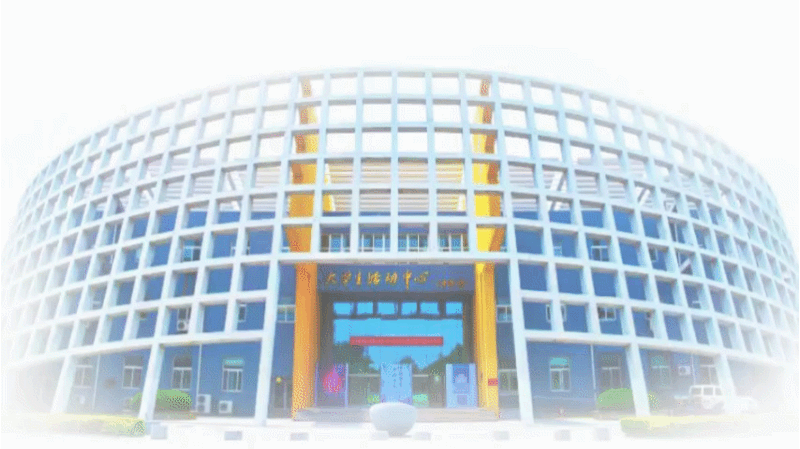








Emerging Dawn
Set Sail and Forge Ahead
Are you ready to embark on your next highlight moment, or are you still hesitating in making choices? Don’t worry, “Micro Light” has brilliantly launched “Navigating the Dawn of Embedded Development”! It not only encompasses a “roadmap” for professional knowledge development but also shares practical wisdom from senior students. “Micro Light” hopes that “Navigating the Dawn of Embedded Development” can act as a timely rain, awakening your thoughts and allowing you to shine in your own way.

Communication Engineering

1. Professional Overview
1. Basic Information: With the vigorous development of 5G mobile communication, the Internet of Things, big data, and artificial intelligence, the communication engineering profession has entered another highly competitive stage of development. Communication engineering belongs to the first-level discipline of information and communication engineering, covering multiple fields such as communication, electronics, computer science, and networking, with strong theoretical, systematic, and practical aspects in its curriculum.
2. Training Features: Supported by theories and technologies from circuits, electronics, and computer science, it closely follows the trend of intelligent development, fully considering the fundamental role of mobile communication in the information age. It offers two specialized directions: intelligent embedded system design and wireless communication technology and networks, establishing a theoretical and practical teaching system that meets social needs and service training objectives, with a broad theoretical foundation and distinct professional characteristics.
3. Core and Specialized Courses: Basic courses (Introduction to Communication Engineering, Circuit Series Courses, Fundamentals of Artificial Intelligence, High-Frequency Electronic Circuits, Signals and Systems, Electromagnetic Fields and Waves, Python Programming, etc.) and specialized courses (Communication Principles, Digital Signal Processing, DSP Principles and Applications, Matlab Experiments and Simulations, Mobile Terminal Application Development) have been added to adapt to the trend of intelligent development, including several new elective courses (Principles and Applications of Embedded Systems, Electronic Circuits and PCB Design, Artificial Intelligence and Machine Learning, Mobile Communication Networks (5G), Principles and Applications of FPGA, Data Communication and Computer Networks, Wireless Communication Technologies, etc.).
2. Employment Directions
Graduates from the wireless communication technology and network direction can work in computer networks and data communication, mobile communication, and information transmission and processing fields, engaging in product development, design, manufacturing, construction, marketing, operation maintenance, and management. Graduates from the intelligent embedded system design direction can work in modern electronic systems, intelligent hardware design, embedded system hardware development, and embedded system software development, engaging in technical research and development, engineering design, and marketing management in various socially relevant jobs.
3. Advice from Senior Students
For students in the communication engineering profession, here are some suggestions to help you learn and develop better:
First, cultivate “engineering thinking”: Communication engineering emphasizes logical analysis and system design capabilities. In daily learning, focus on the integration of theory and practice, starting from real problems to understand core principles such as signal transmission, circuit design, and network protocols. Gradually develop the ability to solve engineering problems.
Second, build a “knowledge network”: When studying, clarify the logical connections between various modules. Use mind maps to organize the knowledge system, forming a complete framework of “theory-technology-application”.
Third, emphasize practice and project accumulation: Participate actively in laboratory courses, course design, electronic competitions, or open-source projects. From soldering circuit boards to writing communication protocols, from simulation software to actually building small communication systems, hands-on practice deepens theoretical understanding while enhancing hard skills such as programming tool usage.
Fourth, maintain curiosity, keep up with technological frontiers: Actively follow industry trends, learn new technology standards, participate in academic lectures or technical communities. At the same time, when facing complex formulas or debugging failures, maintain optimism and resilience, laying a solid foundation for future research or career.
In summary, students in the communication engineering profession should focus on the close integration of theory and practice, mastering core knowledge while actively participating in practical projects to enhance problem-solving abilities. They should also keep an eye on industry trends to adapt to the rapidly changing technological environment.

Civil Engineering

1. Professional Overview
1. Basic Information:Civil engineering is a discipline that combines engineering and technology, with a strong application focus. Based on the needs of the civil engineering market and national construction development, this major includes three specialized directions: housing and civil engineering, road and bridge engineering, and prefabricated engineering and BIM technology. After completing public foundational courses and some basic subject courses in the first two years of university, students can transfer to a suitable specialized direction based on their situation. This major aims to cultivate talents who meet the needs of socialist modernization, develop comprehensively in moral, intellectual, physical, aesthetic, and labor aspects, possess a solid theoretical foundation, broad professional knowledge, and strong engineering practice abilities, capable of participating in general civil engineering structure design, solving general technical problems in civil engineering, initially possessing civil engineering management capabilities, and participating in domestic and international civil engineering projects as applied professionals.
2. Major Courses: Advanced mathematics, college English, linear algebra, college physics, probability theory and mathematical statistics, computer programming (C), and other public foundational courses. Engineering graphics and engineering drawing, engineering geology, theoretical mechanics, material mechanics, introduction to civil engineering, soil mechanics, foundation engineering, structural mechanics, engineering surveying, civil engineering construction, civil engineering materials, civil engineering construction regulations, engineering contracting and project management, basic principles of reinforced concrete structures, principles of steel structure design, road and bridge engineering, modern engineering management, engineering budget, reinforced concrete housing structures, design of building steel structures, seismic resistance of engineering structures, BIM application technology, and analysis of typical BIM cases are among the professional foundational and specialized courses. Additionally, there are practical training sessions such as recognition internships, engineering surveying internships, field teaching internships in engineering geology, production internships, course design for specialized courses, structural design software applications PKPM, structural design software applications MIDAS, and graduation design.
2. Employment Directions
Graduates in civil engineering are highly sought after in society, with high employment and graduate school admission rates. Students are employed in various aspects of engineering construction, often working in design, testing, construction, management, consulting, supervision, research, education, investment, and development in fields such as housing structures, highway and urban transportation, railway engineering, bridge engineering, and underground tunnel engineering. After a specified period of practical work experience, civil engineering graduates can apply for and obtain various levels of relevant registered professional certification qualifications.
3. Advice from Senior Students
For students in the civil engineering profession, here are some suggestions that may effectively assist you:
1. Solidify the foundation, emphasize theoretical learning:Civil engineering is a highly comprehensive discipline, so it is essential to focus on foundational courses to lay a solid groundwork for subsequent specialized courses. At the same time, emphasize the accumulation of theoretical knowledge to understand and master the basic principles and methods of civil engineering.
2. Focus on practice, cultivate hands-on skills: Merely mastering theoretical knowledge is far from sufficient; it is crucial to emphasize practical components and actively participate in experiments, internships, and course design. By hands-on operation and personal experience, improve your practical skills and problem-solving abilities.
3. Stay updated on industry trends, broaden your knowledge base:Keep an eye on industry trends, understand the latest developments in technology, materials, and processes. You can obtain the latest information through reading professional journals, attending academic lectures, and browsing industry websites. At the same time, broaden your knowledge base to enhance your overall quality and competitiveness.
4. Cultivate teamwork spirit, enhance communication skills: Develop a spirit of teamwork, learn to collaborate with others, and in a team, leverage your strengths while respecting others’ opinions and suggestions. Also, focus on improving your communication skills, including both verbal and written expression.
In summary, civil engineering students should focus on solid mastery of foundational knowledge while also emphasizing the cultivation of practical skills. By participating in internships and project training, enhance hands-on abilities, improve personal qualities, and increase competitiveness, laying a solid foundation for future careers.
“Micro Light” will always be there for you, and “Navigating the Dawn of Embedded Development” will act as timely spring rain, helping you calibrate your “breaking ground” direction. With aspirations, forge ahead, and may your growth journey be filled with fragrance and smoothness, each step leaving a solid footprint and endless hope.
What major would you like to learn about next? You can flip to the end to vote, and we will introduce the two majors with the highest votes. Or if you want to chat with “Micro Light,” feel free to send an email, and we look forward to hearing from you (Based on everyone’s needs, we can also anonymously showcase excellent letters)!

END
Text and Image Editing / Student Union News Media Department Zhang Xiaoxiao
Text Source / Tianjin Renai College Admissions Office WeChat Official Account
Text Editing / Student Union Learning Development Department Guo Yuwei
Proofreading / Yang Fan Liu Ze
Editor / Guo Nannan
